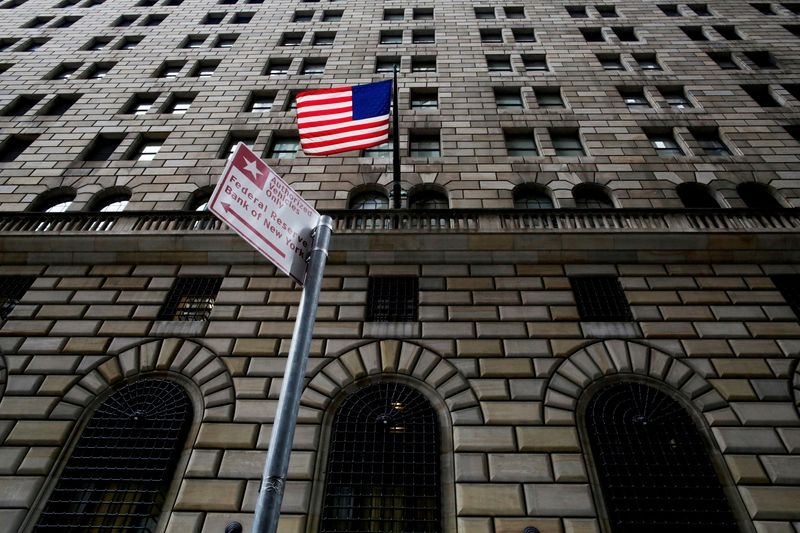
Across the United States, language barriers can make it difficult for non-native English speakers to gain access to banking services, which can make things like paying bills and saving money more challenging. One in 12 people in the U.S. speaks only limited English and is currently poorly catered for by the banking industry.
There can be serious costs associated with not having a bank account. Without access to banking services, it can be much more difficult to pay bills and save money. But there are also costs for banks. In 2021, the U.S. Census Bureau reported that 67.2 million people in the U.S. (21.7% of the population) speak a language other than English at home. Thus, making financial services available to these communities isn’t just the right thing to do—it can also be profitable for banks.
In this article, we’ll look at what banks are doing to overcome language barriers in banking, and how this can be of mutual benefit for both them and their customers.
Key Takeaways
- Banks looking to remain agile in the economy and attract customers need to take steps to serve populations with limited English proficiency (LEP).
- Banks that have taken these steps have reaped financial rewards.
- Immigrants and natives who speak English as a second language have rights and resources available to help them get and use banking products.
How Banks Can Help Customers Overcome Language Barriers
The impact of language barriers on people’s access to financial services can be understood by looking at the number of people in the U.S. who are unbanked—that is, who don’t have a bank account. Nationally, about 4.5% of people did not have a bank account in 2021. But the rate for communities where English is not the first language is much higher. For example, the available data shows that among Hispanic households, 8.4% are unbanked.
Though comparative data are hard to find, the scale of the problem might also be suggested by just how many people in the U.S. use English as (at least) a second language. Nearly 22% of the population speaks a language other than English at home—that’s 67.2 million people. Many of these people are, of course, fluent in English, but many aren’t. One in 12 people older than age 5 have limited English proficiency (LEP), meaning they speak English less than very well.
For banks, this potentially represents a huge market of unserved or underserved customers. In other words, banks that are able to adapt their services to help serve historically underbanked communities not only gain publicity for their actions but also gain customers that help their bottom line. An institution that contributes to the growth and development of the Latinx and other non-native English-speaking communities could expand and increase its business significantly.
New Initiatives
There are emerging signs that banks have started to recognize the commercial possibilities that come with reaching out to underserved communities.
For example, in 2001, when Wells Fargo started accepting Matrícula Consular cards—an identity card issued by the Mexican consulate to Mexican citizens who reside outside Mexico—as identification to open an account and offered targeted services to areas populated primarily by immigrants, they opened more than 400,000 new accounts in 2½ years, with an average of 22,000 new accounts a month.
Another example is Mitchell Bank in Milwaukee, which opened a branch called Cardinal Bank in a Milwaukee high school with a 70% Latinx immigrant population. The branch, operated by high school students, brought in deposits of $870,000 and made more than $200,000 in loans within three years. In addition to opening the branch in an underserved area, Cardinal Bank offered financial literacy programs, helped customers without Social Security numbers apply for Internal Revenue Service (IRS) Individual Taxpayer Identification Numbers (ITINs), and used the Federal Deposit Insurance Corp. (FDIC) Money Smart program to help develop money skills for students and their parents.
Steps are also being taken at a national level. The Consumer Financial Protection Bureau (CFPB) has tried to increase access to financial services for customers with limited English proficiency. The CFPB has set up a phone number at (855) 411-2372 expressly to help customers in more than 180 languages, and it provides free educational materials on banking in dozens of languages. Those resources are available here.
The Future
It’s also clear, however, that there is a long way to go when it comes to overcoming language barriers in banking.
The first step is to recognize that overcoming these barriers requires more than merely hiring multilingual support and branch staff. Even if banks offer basic account information or customer services in a range of languages, financial disclosures and written documents may not be available in languages other than English. In addition, it can be a struggle for recent immigrants to get used to the unique ways that bank accounts, investments, and other financial products work in the U.S.
Nevertheless, a number of detailed guides are available for banks looking to improve their engagement with non-English-speaking communities, and a number of well-defined steps can be taken.
Banks looking to expand their reach to customers with limited English proficiency can take several steps to attract and retain them. These include:
- Having signage within the bank, and particularly welcome signage, available in another language
- Creating and utilizing multilingual channels other than stand-alone bank branches (such as ATMs)
- Reviewing demographic data for their target market to identify the most common language needs, then developing banking solutions around those needs
- Recruiting and hiring employees who speak multiple languages and incentivizing current employees to learn a second language
- Establishing interpretation policies and hiring dedicated translation and interpretation staff
- Implementing systems for both written and verbal translation to help ensure that communications with limited English proficiency customers are as accurate and consistent as possible. This includes using bilingual glossaries to keep terminology consistent across translations.
- Ensuring staff and contractors have the necessary language and cultural understanding to better serve limited English proficiency customers, including completing special training and/or certification
- Offering multilingual services over the phone, online, and with mobile banking
- Advertising in non-English-language media outlets
- Allowing new immigrants to open accounts with small deposits, and making these easy to access
- Publicizing their acceptance of Matrícula Consular Cards or foreign passports as ID to open accounts
All of these initiatives are designed to make banking less overwhelming for people whose first language is something other than English.
Are banks allowed to refuse an account to an immigrant?
No. Federal law makes it illegal for lenders to discriminate against individuals on the basis of national origin.
What can I do if a bank refuses to open an account for me?
If a bank refuses to open an account for you and you feel that they are discriminating against you on the basis of your national origin, you can file a complaint with the Consumer Financial Protection Bureau (CFPB).
Is a bank account better than a prepaid debit card?
It depends on the bank account and the prepaid debit card in question, but most bank accounts will have better fee structures in place that make it easier and cheaper for you to access your money. Additionally, many bank accounts come with built-in identity theft protection.
A bank account is an important first step in building credit and can help you document proof of funds on any future business loan, personal loan, or mortgage application. Most prepaid debit cards cannot.
The Bottom Line
Banks have a responsibility to provide services to customers, even when it is more difficult because of a language barrier. Banks that aren’t able to expand their services to meet the needs of the underbanked are going to lose out on significant economic opportunities in the coming decades.
Customers who face a language barrier in banking have numerous options available to them now, and as banks come to recognize the economic power of Latinx and other immigrant communities, more opportunities will become available.
Article Sources Investopedia requires writers to use primary sources to support their work. These include white papers, government data, original reporting, and interviews with industry experts. We also reference original research from other reputable publishers where appropriate. You can learn more about the standards we follow in producing accurate, unbiased content in our editorial policy.
-
Consumer Financial Protection Bureau. “Five Ways Banks and Lenders Work with People Who Speak or Understand Limited English.”
-
U.S. Census Bureau Data. “American Community Survey: DP02 | Selected Social Characteristics in the United States,” select “2021: ACS 5-Year Estimates Data Profiles.”
-
Federal Deposit Insurance Corp. “2021 FDIC National Survey of Unbanked and Underbanked Households.”
-
National Immigration Law Center. “Basic Facts About the Matrícula Consular,” Page 1.
-
Federal Deposit Insurance Corp., via Internet Archive. “Supervisory Insights: Linking International Remittance Flows to Financial Services: Tapping the Latino Immigrant Market.”
-
Appleseed Network, via Texas Appleseed. “Banking Immigrant Communities: A Toolkit for Banks and Credit Unions,” Page 8.
-
Consumer Financial Protection Bureau. “Immigrants Facing Unique Financial Challenges.”
-
Federal Deposit Insurance Corp. “2008 Survey of Banks’ Efforts to Serve the Unbanked and Underbanked: Chapter 12: Case Studies,” Pages 311–315 (Pages 33–37 of PDF).
-
Federal Deposit Insurance Corp. “2008 Survey of Banks’ Efforts to Serve the Unbanked and Underbanked: Chapter 12: Case Studies,” Pages 286, 311–315, and 322 (Pages 8, 33–37, and 44 of PDF).
-
U.S. Department of Justice. “Federal Protections Against National Origin Discrimination,” select “Lending.”
-
Consumer Financial Protection Bureau. “What Protections Do I Have Against Credit Discrimination?”
-
Consumer Financial Protection Bureau. “Can I Use a Prepaid Card to Build or Repair My Credit History?”
-
Consumer Financial Protection Bureau. “Understand Your Prepaid Card Disclosure.”
-
Federal Deposit Insurance Corp. “Consumer Assistance Topics: Deposit Accounts.”
Open a New Bank Account Advertiser Disclosure × The offers that appear in this table are from partnerships from which Investopedia receives compensation. This compensation may impact how and where listings appear. Investopedia does not include all offers available in the marketplace. Open a New Bank Account Advertiser Disclosure × The offers that appear in this table are from partnerships from which Investopedia receives compensation. This compensation may impact how and where listings appear. Investopedia does not include all offers available in the marketplace.






